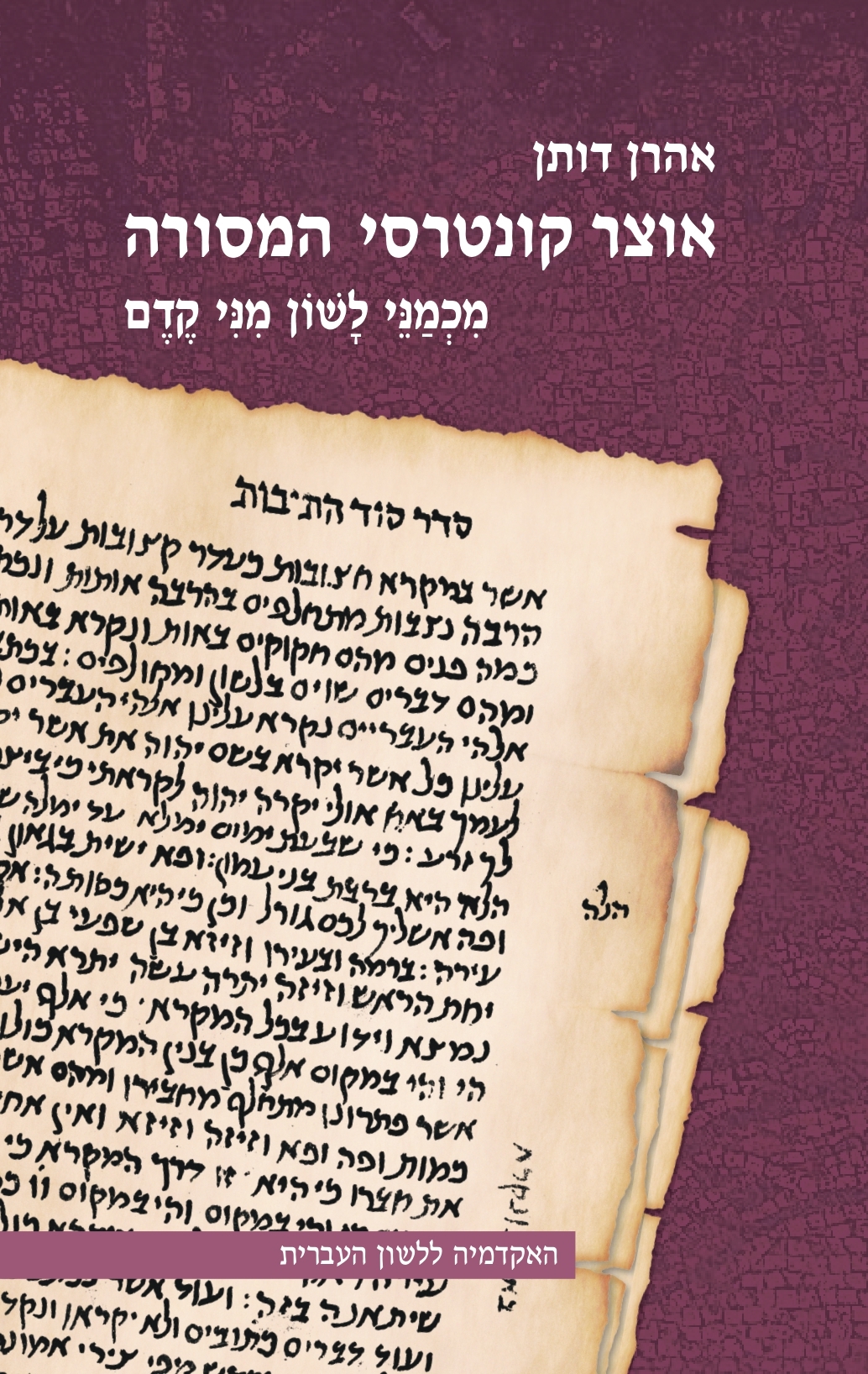Book: Thesaurus of Quntrese Ha-Masora: Hidden Language Treasures of Old, by Aron Dotan

Do you need a short, memorable overview of when the shewa is silent or sounded, and how to pronounce it? Or perhaps a recap of when the accent tevir is preceded by darga, and when by merkha? Maybe you’d like a succinct reminder of the various fiddly rules regarding the spirantisation of the begadkefat letters when they begin a word ending in one of the letters alef, vav, yod or he? Or maybe you’d settle for a summary of the different pronunciations of the letter resh? If so - you need the quntrese ha-masora!
During the masoretic era (roughly the 6th to the 10th centuries CE), much effort was expended to elucidate these rules - and many others like them - and to enumerate any exceptions. Many of these discussions were then phrased in brief, pithy, often rhymed, formulations in Hebrew, Aramaic, and sometimes Judaeo-Arabic. These are what Dotan calls the quntrese ha-masora.
Like so much of the masoretic oeuvre, these masoretic-grammatical discussions were not codified into a single, well-defined collection. Rather, they exist as a somewhat nebulous cloud of distinct formulations (often with many recensions of each discussion), from which the masorete-naqdan could pick and choose at will, according to purpose. The one notable exception to this is the Diqduqe ha-Teamim of Aharon ben Asher, which is indeed a well defined text, though it only contains a relatively small subset of the total number of these pithy, proto-grammatical discussions.
Dotan dealt with the Diqduqe ha-Teamim in his doctoral work over 50 years ago, always intending to proceed thence to tidying up the remaining quntresim, not encompassed within that text. That intention took a full half-century to be fulfilled in the form of this 2020 publication.
It was worth the wait.
Within the space of 750 pages Dotan has edited 65 distinct quntresim (including the 26 contained in his edition of Diqduqe ha-Teamim). Dotan has arranged these 65 disparate texts in thematic groups: discussions related to the shewa, discussions related to the interchange of vowels; discussions related to the accents of the twenty one prose books, and so on. Each of the quntresim is then introduced separately, and accompanied by a full commentary. Most of the quntresim are attested in various different recensions, each of which is edited and presented separately, and the relationships between the various recensions discussed. To the overall collection is appended a brief introduction, situating the quntresim within the masoretic oeuvre as a whole, discussing the methodological difficulties inherent in editing texts like these, and describing the manuscripts with which Dotan worked.
Many of the quntresim are phrased elliptically, in piyyut-like language, and the sense is frequently hard to grasp. Yet Dotan leads the reader sure-footedly, word-by-word, line-by-line, through territory he himself has spent a lifetime exploring. He attempts to make sense of the quntresim as they stand, without freely resorting to textual emendation (the overuse of which on the part of Baer and Strack in their edition of the quntresim is not infrequently criticised). In various places Dotan freely admits he has changed his mind, and no longer holds to certain interpretations expressed in his edition of Diqduqe ha-Teamim. Thus, this volume treats the reader to the mature reflections of a scholar with an incisive and flexible mind, discussing texts he has been pondering all his life, all expressed in the elegant, crisp Hebrew one would expect from someone connected to The Academy of the Hebrew Language for over 70 years.
The Academy has done a beautiful job in the production of this book. The layout is generous, the fonts highly readable, and judiciously chosen to highlight the different parts of the text, apparatus and commentary. How different from the cramped, type-written edition of Dotan’s Diqduqe ha-Teamim! Is it too much to hope that the Academy might see their way to producing an updated print version of this seminal edition, as a companion to the present volume?

Add new comment